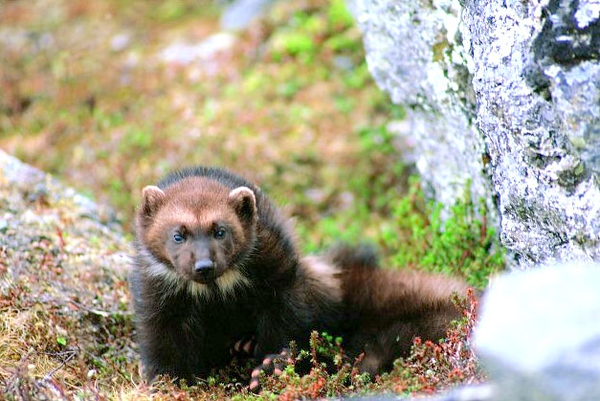
Conservationists in 2014 estimated there were between 250 and 300 wolverines left in the lower 48 states in the U.S. (Courtesy of U.S. Fish and Wildlife Services)
Biologists with the U.S. Fish and Wildlife Service have begun a new project to better understand wolverine populations and demographics within Idaho forests.
A year ago, the North American wolverine was listed as a threatened species under the Endangered Species Act, meaning it is federally recognized as a species that would likely become an endangered species within the foreseeable future throughout all or a significant portion of its range.

Wolverines live in remote, high-elevation alpine habitats. During the winter, they rely on deep snowpack to dig dens where they rear their young. There is limited population data on wolverines, but in 2014, U.S. Fish and Wildlife estimated that between 250 to 300 wolverines lived in the Lower 48 states.
The Wolverine Monitoring Enhancement project began in October with scientists setting up motion sensing cameras, scent dispensers and hair-snare stations across Idaho’s Boise, Payette and Sawtooth national forests. The goal is to lure wolverines to trees with the scent of roadkill, and snag a piece of hair as they investigate the scent. The hair samples will be used to analyze DNA.
The project will take place for the next three years, and it is funded by the U.S. Fish and Wildlife’s Species Recovery Fund.
Study aims to help forest managers understand how to protect wolverines
The Wolverine Monitoring Enhancement project is using data collected in a similar 2010-2015 study that looked into the impact backcountry winter recreation has on wolverine populations in Idaho, Montana and Wyoming.
That study, however, concluded that they did not have enough information to determine the impact.
This new study is meant to gather more information but on a localized scale, Payette National Forest Public Affairs Specialist Kelly Martin told the Idaho Capital Sun.
“We’re trying to gather as much information as we can to help limit impacts to the species,” she said. “What does that mean? Right now we couldn’t say ‘we need to do X, Y or Z to limit impacts to wolverines,’ because we just don’t know for certain what that would be.”
U.S. Fish and Wildlife Service lists wolverines as ‘threatened’ under Endangered Species Act
Wolverines were once found across the northern tier of the U.S, stretching from states like Montana and Idaho to regions as far south as New Mexico in the Rockies and Southern California in the Sierra Nevada range. But after more than a century of unregulated trapping and habitat degradation, wolverines in the Lower 48 only exist in small populations in Idaho, Montana, Washington, Wyoming and northeast Oregon.
Last year’s Endangered Species Act marked win for conservation groups
Conservation groups had been pushing for federal protections for the wolverine for two decades.
In 1995, conservation groups petitioned the federal government to list the species, and went through six rounds of successful litigation to secure federal protections.
Under the new protections, the U.S. Fish and Wildlife Service must prepare a wolverine recovery plan, identify protected critical habitat in the future, and possibly plan for reintroduction of the species into Colorado.
Idaho Capital Sun is part of States Newsroom, a nonprofit news network supported by grants and a coalition of donors as a 501c(3) public charity. Idaho Capital Sun maintains editorial independence. Contact Editor Christina Lords for questions: info@idahocapitalsun.com. Follow Idaho Capital Sun on Facebook and X.

